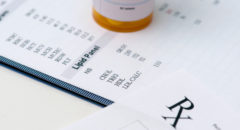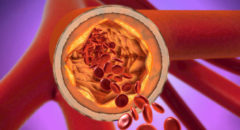
For decades, we’ve been hearing that there’s a “good” and “bad” cholesterol, but what exactly is the difference between the two? Well, for starters, the medical term for “good” cholesterol is actually high-density lipoproteins (HDL) and low-density lipoproteins (LDL) is the medical term for “bad” cholesterol. Knowing the difference can help add years to your life.
HDL
- Consists of mostly protein
- Empties out LDL cholesterol by transporting it to the liver, where it is then reprocessed
- Prevents clogged arteries that are caused by LDL cholesterol
- Reduces your chances for a heart attack and heart disease
Boost your HDL by walking at least 30 minutes daily, eating foods rich in omega-3 fatty acids like salmon and trout, quitting smoking, avoiding alcohol or drinking in moderation and eating less sugar.
LDL
- Consists of mostly fat
- Deposits in the walls of arteries
- Damages the lining of your arteries
- Increases your chances of a heart attack and stroke
RELATED: Operation Life – Back 2 Basics: Cholesterol (Video)
What factors affect your cholesterol?
According to the American Heart Association, Black men and women tend to have slightly lower total cholesterol levels than whites. The association reports that 44.8 percent of Black men and 42.1 percent of Black women have high or borderline high total cholesterol levels. Meanwhile, 47.9 percent and 49.7 percent of white men and women have high or borderline high levels.
Your genetics play a major role in how your food is metabolized and how much cholesterol your body produces. However, cholesterol isn’t solely found in food. Your liver creates about 75% of your blood cholesterol. Your genetic makeup can have a direct effect on how much cholesterol is created and what your ratio of LDL to HDL is.
Medical conditions that can cause unhealthy cholesterol levels:
- Chronic kidney disease
- Diabetes
- HIV/AIDS
- Hypothyroidism
- Lupus
Medications for certain conditions that can raise your cholesterol levels:







